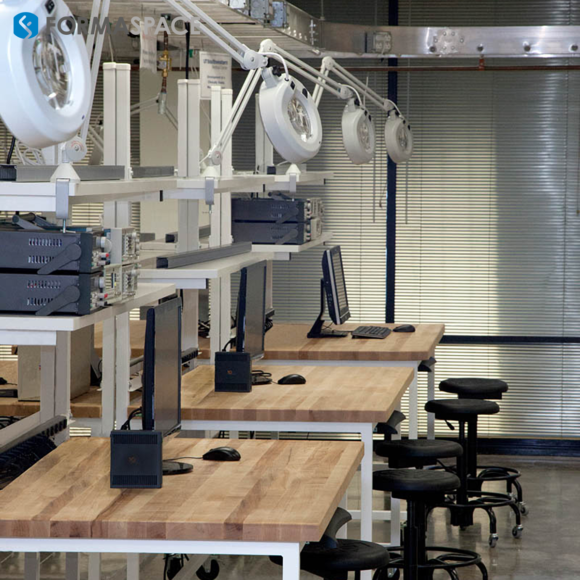The Human Genome Project Ushered in a New Golden Age of Genetic Discovery

The Human DNA Project (1990-2003) remains one of the pinnacles of scientific achievement in biology – for the first time, we were able to uncover the roadmap that allows us to pass along our unique genetic characteristics from one generation to the next.
But there is always more to the story, more to discover.
Recently, we wrote about a secondary project to expand the human genome project to sequence the DNA of underrepresented populations around the world, which is documenting how DNA genetics vary depending on your background.
A key consequence of the Human Genome Project is that we don’t know as much as we thought we did.
For example, scientists realized that the actual genes (and gene-related sequences) that we associate with genetic inheritance comprise only a small fraction (2 – 3%) of our total DNA – the balance consisting of unexpected components, ranging from transposons, introns, pseudogenes, and repeated sequences of DNA.
Many of these elements were initially brushed off as accumulated “junk DNA,” but researchers are continuing to investigate what role these might play in our biochemistry.

DNA Alone Does Not Determine Our Genetic Destiny – Our Increasing Understanding of Epigenetics and the Role of Gene Expression in Determining Health and Disease Outcomes
Researchers are also taking a closer look at the role of gene sequences in human DNA.
What are they discovering?
“It’s complicated.”
It turns out the human genetic map in our DNA is not deterministic; in other words, having a particular gene sequence does not automatically lead to a certain outcome, such as a disease.
What’s becoming increasingly clear is the powerful role that genes can play throughout our lives. Working within the constraints of our own inherited DNA sequences, genes can “express” themselves differently over time (a process known as epigenetics) in response to a range of factors, including environmental/chemical exposure, diet/gut biome, age, and stress.
If you want to learn more about these complicated biological processes, we recommend the new book How Life Works: A Guide to the New Biology by Philip Ball.

Controlling Gene Expression with an On/Off Switch Could be a Health Gamechanger
Let’s look at this concept of gene expression in the context of healthcare outcomes.
In simple terms, there appear to be many instances where the onset of a particular genetically inherited disease is guided by a two-step process.
In these instances, the first step in determining disease onset is whether you have inherited the underlying DNA that can result in a genetic disorder.
The second step is something that triggers your genes to produce (e.g. express) unwanted output, such as disease-causing proteins, during cell replication.
So this begs the question; if we could figure out how to control gene expression, e.g. find a genetic on/off switch, could we flip the switch to turn on the production of “good” cells and turn off the reproduction of disease-causing ones?

How Does the Newly Discovered On/Off Switch for Gene Expression Work?
Fortunately, scientists at the Baylor College of Medicine (BCM) in the Texas Medical Center, Houston, appear to have done just that, e.g. identified an on/off switch for gene expression.
In a recent paper published in Nature, researchers Liming Luo and Jocelyn Duen-Ya Jea have identified an RNA-based switch that controls mammalian gene expression.
The “switch” is a synthetic polyA signal (PAS) cleavage in the five prime UTR of a transgene.
Modifying the switch is a two-step process. The researchers first use an aptamer (a short gene sequence) to inhibit (stop) the PAS cleavage. This is followed up by inserting an alternative gene sequence that can be controlled by injections of an “inducer” drug, which in this experiment was the FDA-approved antibiotic tetracycline.
By altering the dosage of tetracycline injections, the BCM lab researchers were able to control the number of proteins produced – effectively allowing them to modulate the gene expression – and increase the output (if desired) by up to 900%.
The advantage of this approach is that, compared to previous techniques that relied on introducing a “foreign” regulatory protein, this approach does not appear to create an unwanted immune system response.

Controlling Gene Expression Could Play a Significant Role in Personalized Medicine Disease Therapy
Now that scientists have successfully demonstrated a method for controlling gene expression in the laboratory, we can be hopeful that one day, this new technique will make its way into human patient clinical therapy.
This would be a very welcome game changer for those suffering from certain diseases, such as breast cancers that are associated with specific gene expressions, by offering healthcare providers new tools for improving personalized medicine outcomes.

Formaspace is Your Laboratory Research Partner
If you can imagine it, we can build it, at our Austin, Texas factory headquarters.
Talk to your Formaspace Sales Representative or Strategic Dealer Partner today to learn more about how we can work together to make your next construction project or remodel a success.












